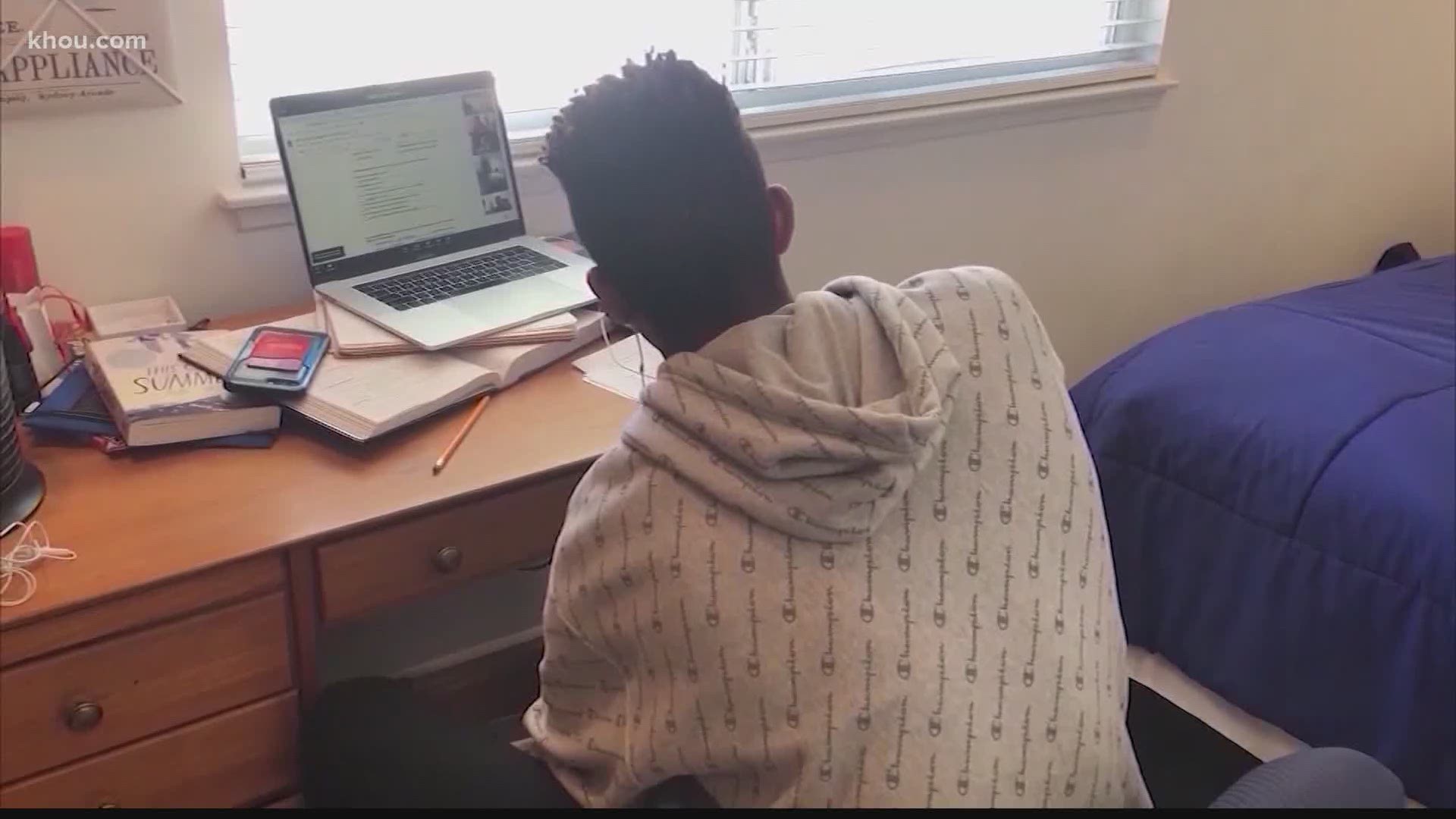The Texas Education Agency has updated its guidelines for the upcoming school year in response to the latest information on COVID-19.
School districts will now have a choice to let students learn virtually for the first four weeks of school. After the first four weeks, districts can continue virtual learning for an additional four weeks, if needed, with a board-approved waiver request to TEA.
Other updates include providing exceptions for students who can't commit to distance learning due to a lack of internet access and technology.
The TEA says those students will be entitled to on-campus instruction during the transition period.
As for schools located in areas of high levels of community spread, the TEA says local school boards will have the flexibility to delay the start of the school year.
The TEA said these changes can provide school systems with the ability to convert high schools—with school board approval—to a full-time hybrid model once students have transitioned back to on-campus instruction.
"This model will provide for a more socially distanced school experience, where students receive a portion of their instruction on-campus and a portion of their instruction remotely at home."
The TEA says one week prior to the start of school and on-campus activities, districts must post for parents and the general public a summary of the district's plans.
These new guidelines come simultaneously with Texas Gov. Greg's Abbott's announcement on the state allocating $200 million in Coronavirus Aid, Relief, and Economic Security (CARES) Act funding to the TEA for the purchase of eLearning devices and home internet solutions so students who lack internet can learn from home if required by their district.
"As school districts delay the start of in-person instruction for the 2020-2021 school year due to COVID-19, it is essential that we work to provide Texas students with the devices they need to connect and communicate online for classroom instruction," said Governor Abbott. "As we continue to combat COVID-19 in Texas, we are committed to providing reliable and effective solutions that will help students academically succeed while protecting public health."
The TEA is still keeping in effect their original guidelines of students and staff wearing masks inside schools and screenings.
The TEA will provide schools with:
- Reimbursement for extra COVID-19-related expenses
- PPE supplies at no cost to schools
- Free online, TEKS-aligned learning tools to deliver remote instruction
- Teacher training
- Statewide efforts to help bridge the digital divide for students at home
Texas State Teachers Association said although the TEA is allowing school districts additional time to reopen schools without a financial penalty, they are still concerned about the surge in COVID-19 cases in Texas.
“Educators, students and their parents need assurance that school buildings will not be reopened until it is safe to do so. Right now, with the pandemic still raging across Texas, we don’t know when that will be," said President Ovidia Molina. “We demand that Gov. Abbott issue a statewide order that all school buildings remain closed and all instruction be provided remotely until the pandemic has clearly begun to subside and it is safe to reopen school buildings under strict safety standards."
Texas AFT President Zeph Capo commented on the new guidelines and said, "A tidal wave of teachers opposing dangerous reopening plans has knocked back the reckless push to open our schools. Today’s announcement giving additional time to phase-in with remote-only instruction is a good move in recognizing the legitimate fears of teachers and parents. But it’s not a question of how many weeks until on-site instruction is the norm. It’s making safety, and not politics or the economy, the top priority for our students and teachers in every decision."

